MSDN describes how to create a batch build, but does not provide a way to automate different batches (and one click solution for the GUI)
This question describes conditionally invoking a second build but doesn't appear to suffice for more than two sequential configurations
This question addresses the same situation, but again only for two configurations
In my test case, each configuration:
- defines its own MACROS (which impact source code)
- is applicable to multiple projects (class libraries). The projects are interdependent and require a specific build order in the context of the current configuration
I would like visual studio to build multiple configurations sequentially with a single build command.
Can child configurations be nested under a parent configuration, and be executed sequentially by visual studio when the parent configuration is built?
UPDATE : ATTEMPTED SOLUTION 1 [2016-03-11]
In response to Stijn's suggested answer I've tried the following:
Setup DotNetFramework 4.5 WinForms solution with 3 test projects and with 6 Configurations:
- CORE_DEBUG
- CORE_RELEASE
- EXTENDED_DEBUG
- EXTENDED_RELEASE
- Debug
- Release
The Debug Configuration must:
- NOT trigger it's own configuration build (i.e. 'Debug')
- must trigger the CORE_DEBUG and EXTENDED_DEBUG Configurations in sequence
I've added the following modified target to the first project's project file:
<Target Name="AfterBuild" Condition="'$(Configuration)|$(Platform)' == 'Debug|AnyCPU'">
Building with the 'Debug' Configuration now, causes an EXTENDED_RELEASE build to trigger. Having a look at the solution file, I see that Visual Studio decided to automatically link 'Debug' to 'EXTENDED_RELEASE':
{4F9706AA-26A9-483C-81C4-22E301C54C89}.Debug|Any CPU.ActiveCfg = EXTENDED_RELEASE|Any CPU
{4F9706AA-26A9-483C-81C4-22E301C54C89}.Debug|Any CPU.Build.0 = EXTENDED_RELEASE|Any CPU
Removing the above two lines from the solution file doesn't help, since Visual Studio just regenerates them. In summary this now has two undesirable outcomes:
- Visual Studio executes a 'Debug' build for Project1
- Visual Studio then executes an 'EXTENDED_RELEASE' for Project2 and Project3
Conclusion: While this approach can work, it also (first) performs debug and release configuration builds respectively. Visual Studio also lists all 6 Configurations in the build menu (we only want Debug and Release to be visible, and behind the scenes Debug must trigger CORE_DEBUG and EXTENDED_DEBUG, and Release must trigger CORE_RELEASE and EXTENDED_RELEASE)
UPDATE : ATTEMPTED SOLUTION 2 [2016-03-16]
Moving on to a makefile project solution: I've created a makefile project as specified by stijn's answer below, and it worked perfectly!
Conclusion : This is the preferred solution in my opinion because it gives the user the most power and ability to control exactly how the build(s) must be executed and how the configurations must be handled.



